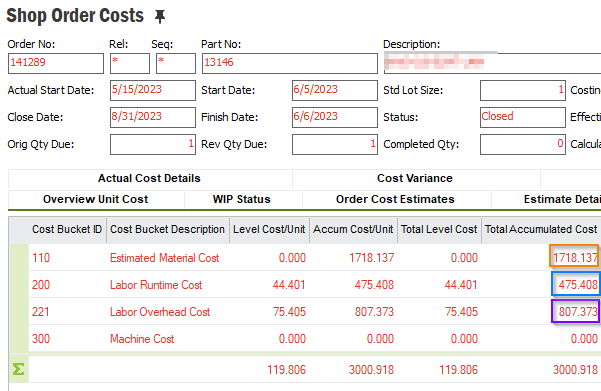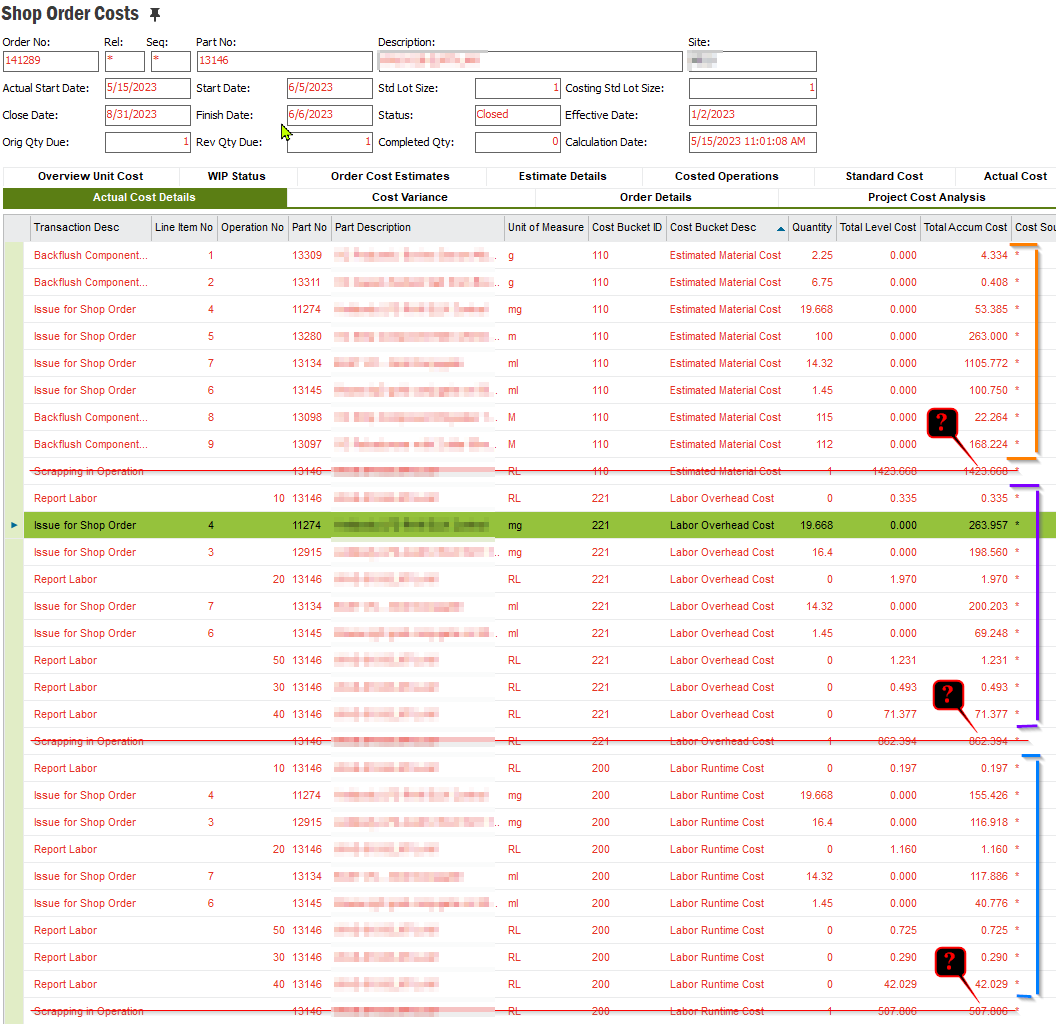I am scrutinizing the Cost per Unit reported on Inventory Transaction History records, specifically for Scrap in Operation transactions (transaction code OPFEED-SCP). We are using APP10. The description of this field is “the inventory value in base currency, as retrieved from the inventory part”.
However, the value as reported on ITH does not match the value coming from the Inventory Part > Costs > Inventory Value > Unit Cost record, nor can I match the breakdown in ITH > Cost Detail with the Part Cost Build-Up for the part. Furthermore, this value is sometimes less than, and sometimes greater than, expected.
I understand that the value I am asking about comes from the sum of the Cost per Unit columns from the ITH > Cost Detail tab, but it is not clear how it is arriving at these values for the transaction. Can anyone explain in direct terms where these values derive from, specifically for Scrap in Operation transactions? We are using standard time for labor reporting.



